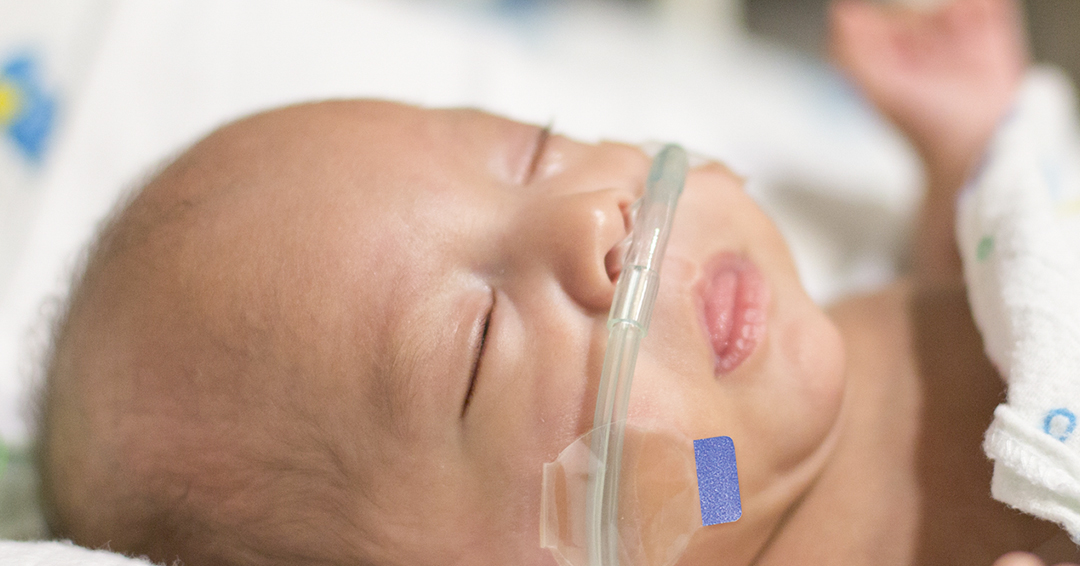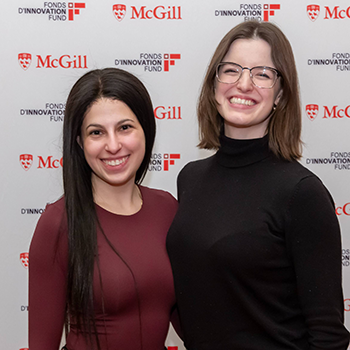
BubbleSense is transforming neonatal care by using sound to monitor respiratory health and improve outcomes for preterm babies battling Respiratory Distress Syndrome.
Ask the parent of any newborn child, and they will often tell you that the most satisfying sound a child makes is when they are sleeping. Something in the simple act of a baby’s breathing fills the heart with quiet joy. But it is not the same for many preterm infants, whose lungs are not yet developed. Breathing for these children can be fraught with problems and often only possible with some kind of mechanical assistance.
Around 1 in 10 babies worldwide are born preterm, with prematurity being the leading cause of death in a child’s early years. And about half of newborns develop Respiratory Distress Syndrome (RDS).
RDS occurs in preterm infants whose lungs may have not yet developed enough surfactant, the slippery substance that helps keep the lungs open and breathing without complication. Without it, tiny air sacs called alveoli collapse like a wet balloon, making it hard to breathe.
Treatment for RDS includes surfactant replacement and methods to help babies breathe normally, either via a breathing tube, a ventilator, or through Continuous Positive Airway Pressure (CPAP). CPAP is a commonly used medical machine that helps keep breathing airways open while the lungs continue to develop and mature.
 The device works by connecting nasal prongs to a baby’s nose and supplying oxygen to the lungs. One end of the tube is submerged in water to monitor how much pressure the baby is receiving.
The device works by connecting nasal prongs to a baby’s nose and supplying oxygen to the lungs. One end of the tube is submerged in water to monitor how much pressure the baby is receiving.
Throughout this process, bubbling occurs in the water canister, which delivers vibrations that are shown to be beneficial to lung development.
The problem is that when babies move the prongs can be dislodged, causing air leaks, or sometimes the prongs do not fit correctly. Compounding things, there is no way to monitor their treatment 24/7, as with many other devices. Currently, healthcare workers use the bubbling sound to assess system performance, but there is no standard process to monitor treatment. The lack of precise monitoring can lead to ineffective therapy, where pressure may not be optimal and leaks can go unnoticed.
Introducing BubbleSense
BubbleSense, the recent winner of McGill Innovation Fund (MIF) Discover award ($25 000), aims to quantify acoustic monitoring for infants. They strive to go beyond simple auditory checks by quantifying these bubbling sounds to provide real-time feedback on system pressure, leaks, and potentially even the baby’s lung function and response to therapy. This device would be the first of its kind to use sound to monitor lung function.
By collecting and analyzing acoustic data, the team is developing models to decode the relationship between bubbling patterns, system setup, and lung health. Their ultimate goal is to transform these insights into digital tools that convert sound into actionable metrics capable of delivering real-time diagnostics, alerts, and personalized treatment guidance. This novel approach provides a continuous, non-invasive way to monitor Bubble CPAP, offering potential improvements in neonatal respiratory care by allowing for more precise and timely adjustments to therapy.
This year, the team plans to collect data from simulated lungs and preterm infants, allowing them to understand any modifications that need to be made and validate whether these sounds can be used to determine lung function.
 “At the core, I am a clinician,” explained Dr. Wissam Shalish, BubbleSense lead, and researcher and assistant professor in the Department of Pediatrics. “I never imagined I could take this research beyond the lab.”
“At the core, I am a clinician,” explained Dr. Wissam Shalish, BubbleSense lead, and researcher and assistant professor in the Department of Pediatrics. “I never imagined I could take this research beyond the lab.”
Dr. Shalish is grateful for the opportunity to connect his research to the business world where it has the potential to scale and have tangible impacts on babies and parents alike. “It’s very eye opening to be connected with experts, it’s a whole new world,” he marveled.
 Alongside Dr. Shalish are two graduate students, Amanda Gross and Emily Campbell who are helping to bring his vision to life. This includes an automated system that would monitor and communicate lung compliance by collecting and analyzing data on the acoustics, pressure and leakage within the system.
Alongside Dr. Shalish are two graduate students, Amanda Gross and Emily Campbell who are helping to bring his vision to life. This includes an automated system that would monitor and communicate lung compliance by collecting and analyzing data on the acoustics, pressure and leakage within the system.
Dr. Shalish is a strong believer in interdisciplinary collaboration. As a researcher, he understands the value of having multiple perspectives. “It’s important to get everyone involved in this process,” Dr. Shalish explained. “Doctors, nurses, parents – everyone has valuable input on what this device could look like.”
Dr. Shalish and his dedicated team hope to continue with the MIF to the next stage, but a lot will depend on this year’s work in lung compliance. If the trials are successful, he hopes to keep going with the Develop application next year. “We want to go for it!” Shalish exclaimed, “This project has already snowballed, and it is through the MIF we have been given the chance to grow.”
